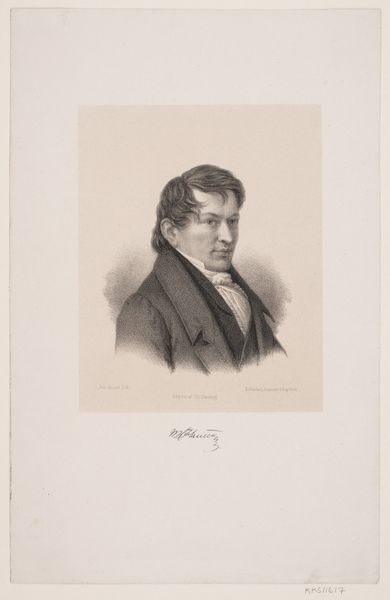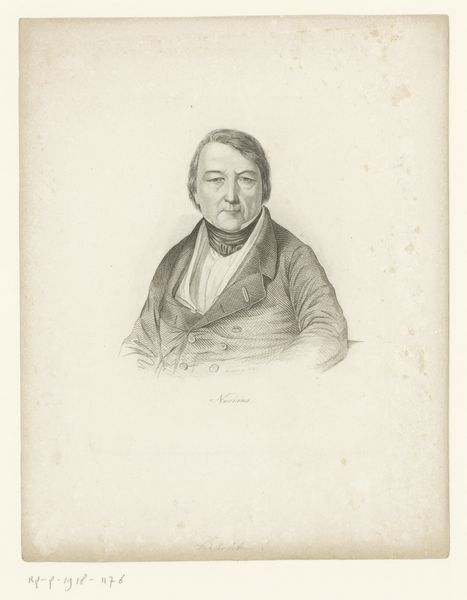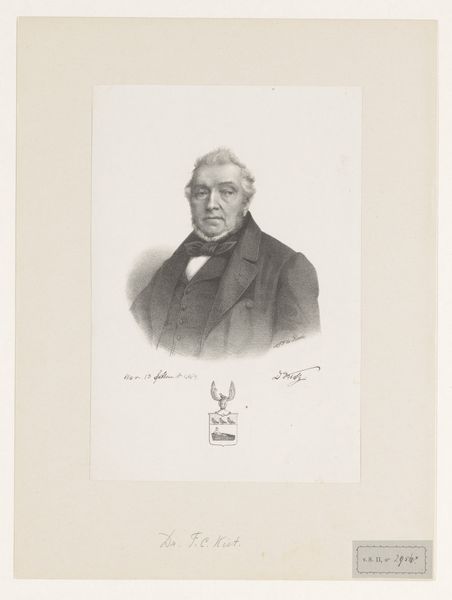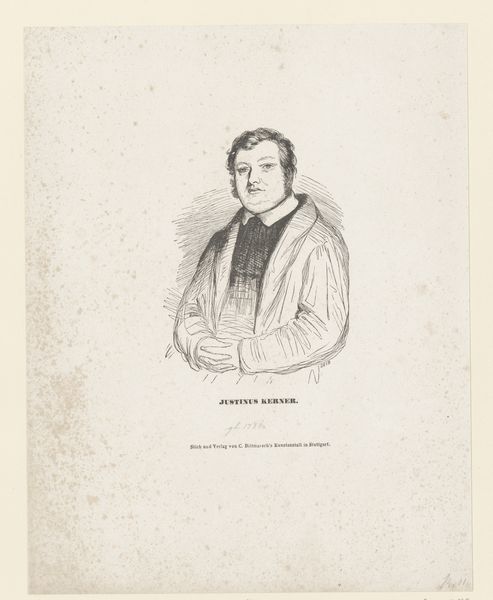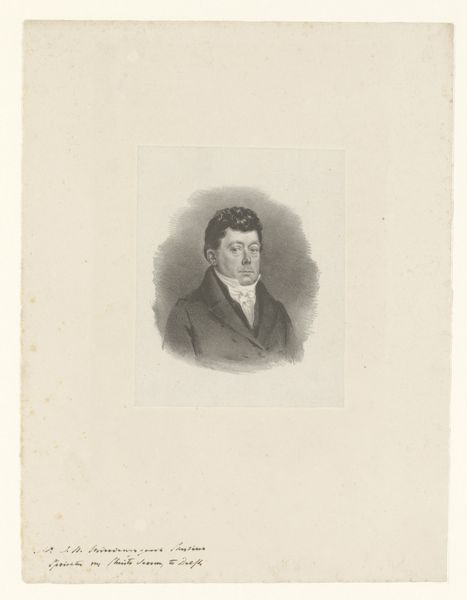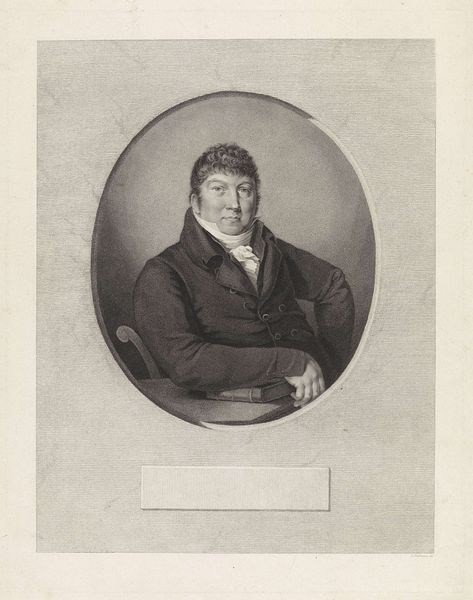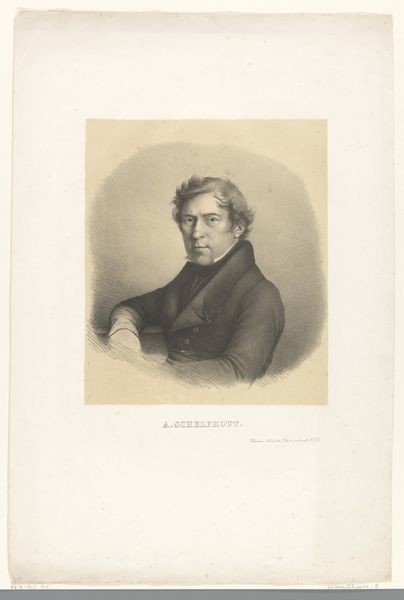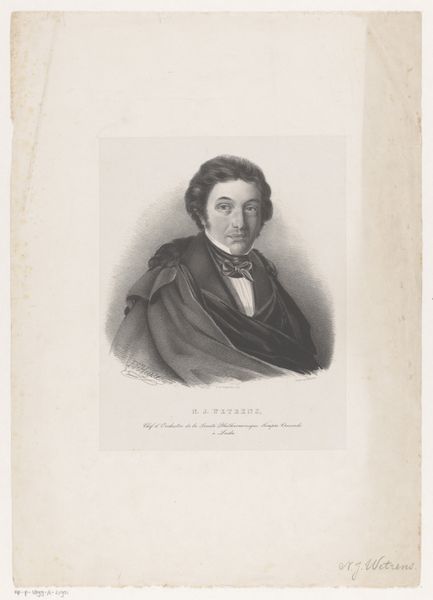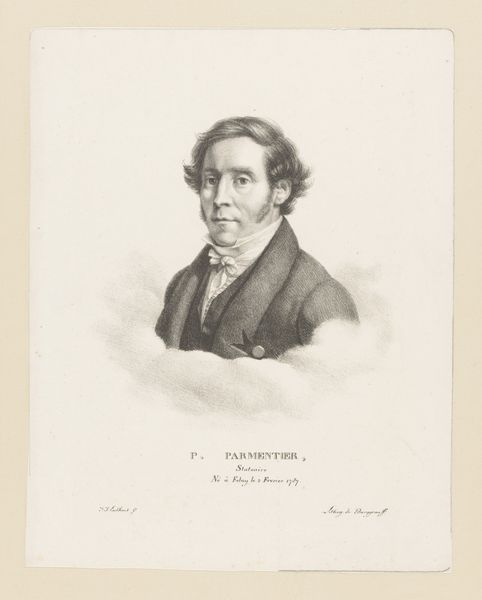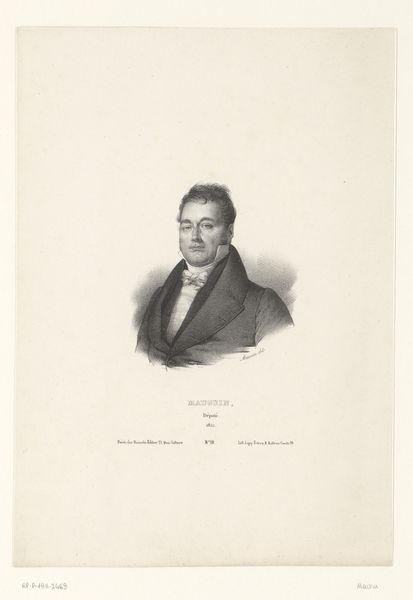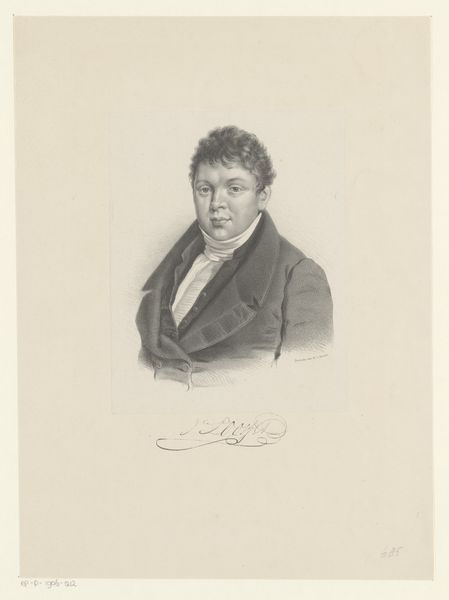
drawing, pencil
#
portrait
#
pencil drawn
#
drawing
#
neoclacissism
#
pencil
#
pencil work
#
academic-art
#
realism
Dimensions: height 298 mm, width 234 mm
Copyright: Rijks Museum: Open Domain
Curator: Before us is a drawing from 1822 by Guillaume Philidor Van den Burggraaff. It's a pencil portrait of Johannes Josephus de Loose. What strikes you about it? Editor: Immediately, the light. The way the subject emerges from that soft, hazy background...it feels almost dreamlike. There's a gentleness there, despite the formal attire. Curator: Yes, the sfumato is quite remarkable for a pencil drawing. It's interesting how the artist has used that technique to almost elevate De Loose. The light and shadow contribute to a sense of importance and respectability. But also note the inscription: De Loose was a “peintre d’histoire et Portraits” or a painter of historical works and portraits. The very act of creating and commissioning a portrait, back then, conveyed a message of wealth, power and status. Editor: Absolutely. And even the Neoclassical style whispers of order and reason, reflecting the values of the era. The direct gaze, the simple lines—it all projects an image of control, a carefully constructed persona. Curator: A persona, indeed. Consider the iconography – the sober coat and tied cravat, projecting professional respectability, which, historically, have shaped masculine identities in portraiture. But I also sense a tension. There’s a softness, vulnerability even, in De Loose’s eyes, challenging that very stoicism. It's almost as if the artist has captured a glimpse beyond the public facade. What cultural values about gender roles do you read in those lines? Editor: That’s a good point. The romantic notion that the drawing as "capture" extends back in part to the idea of painting being seen as both truth and symbol. It gives more dimension to the art. Curator: Indeed, by seeing the image from the point of view of historical value or artistic worth is just limiting its true value. But, what is important to consider now is how that symbolism persists and informs, challenges even, our modern notions of portraiture, which might very well reflect psychological truths, just to continue the "truth" of capture that this representation seems to contain, that emotional weight... fascinating, truly! Editor: I agree! Thank you, Burggraaff, for prompting so many intriguing questions about a single image and art.
Comments
No comments
Be the first to comment and join the conversation on the ultimate creative platform.
